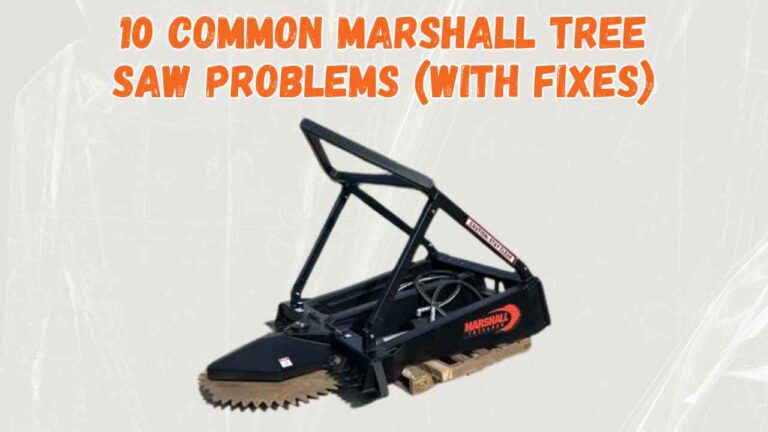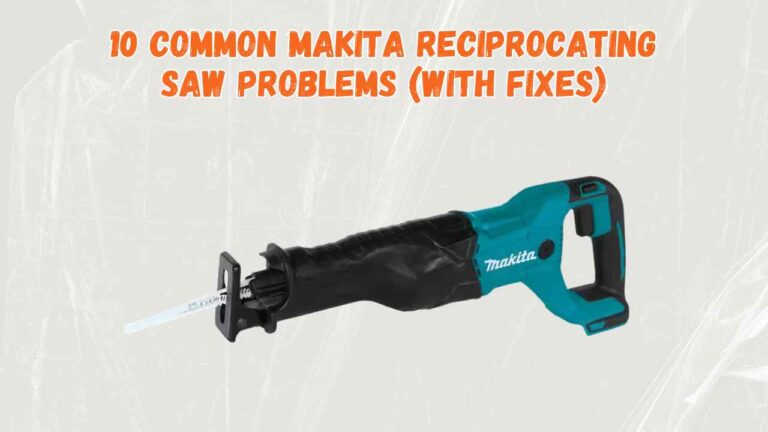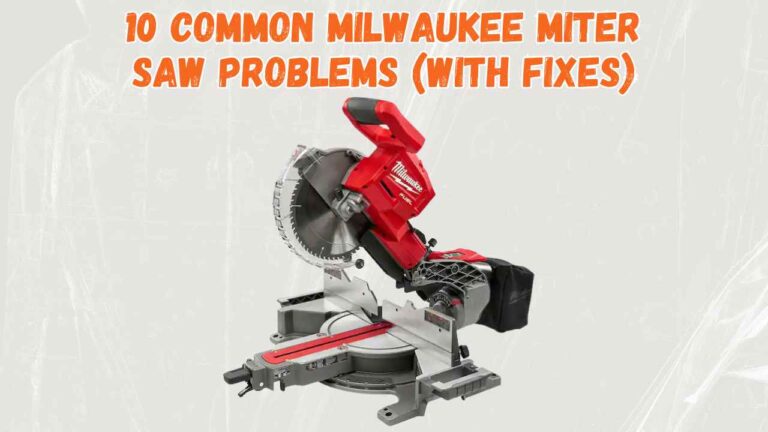Struggling with your circular saw? You’re not alone!
From unexpected stops to uneven cuts, circular saw problems can be frustrating, but most are easy to fix with the right know-how.
In this guide, we’ll walk you through 10 common issues and their simple solutions, so you can keep your saw running smoothly and get back to your projects hassle-free.
Circular Saw Problems (Short Overview)
Circular saws can face issues like stalling, dull blades, or uneven cuts, but don’t worry most are easy to fix!
Regular maintenance, checking the blade alignment, and replacing worn-out parts can solve most problems quickly.
Stay proactive, and your saw will perform like a pro.
Read 10 Common Problems With Fixes In Easy Ways…

1. Blade Dullness
A dull blade is one of the most common circular saw problems. When the blade is worn out, it struggles to cut cleanly, leading to rough edges and slower performance.
Using a dull blade can also overwork the motor, causing damage to your saw over time.
Causes:
- Regular wear and tear from frequent use.
- Cutting through hard materials like metal or dense wood.
Fixes:
- Replace the blade with a sharp, high-quality one compatible with your saw.
- Regularly check and clean the blade to remove debris or buildup that can dull it faster.
2. Motor Overheating
One common issue with circular saws is motor overheating, which can cause the tool to stop functioning properly during use.
Causes
- Overloading the saw by cutting thick or tough materials too quickly.
- Prolonged use without giving the motor time to cool.
- Dust or debris clogging ventilation openings, restricting airflow.
Fixes
- Avoid forcing the saw; let it cut at its own pace.
- Take breaks during long cutting jobs to allow the motor to cool down.
- Regularly clean the saw’s vents and remove any dust or debris for better airflow.
3. Poor Alignment
A misaligned circular saw can lead to uneven cuts and inaccurate results, affecting the overall quality of your work.
Causes:
- The saw blade is not properly aligned with the base or guide.
- Loose or worn-out components, such as the blade or fence.
Fixes:
- Check the blade and guide alignment before starting any cut and adjust if necessary.
- Tighten loose parts or replace worn components to restore precision.
- Regularly maintain and inspect your saw to prevent alignment issues in the future.
4. Power Loss
A circular saw losing power can be frustrating and disrupt your work.
Causes
- Worn-out carbon brushes: These are essential for transferring electrical current and can wear down over time.
- Damaged power cord: A frayed or broken cord can interrupt the power supply.
- Overheating motor: Continuous use without breaks can overheat the motor, leading to a power drop.
Fixes
- Replace carbon brushes: Inspect and swap them with new ones if worn.
- Check and repair the power cord: Look for visible damage and replace it if needed.
- Allow the motor to cool: Take breaks during extended use to prevent overheating.
Read Also:
Greenworks pole saw problems
5. Binding Cuts
When using a circular saw, binding cuts can be a frustrating problem. This happens when the blade gets stuck while cutting, often causing kickback and uneven results.
Cause
Binding usually occurs due to improper alignment of the saw, a dull blade, or trying to cut unsupported materials. Twisting or forcing the saw through the cut can also lead to binding.
Fixes
To prevent binding, always use a sharp blade and ensure the saw is properly aligned.
Support the material securely on both sides and let the saw move at its own pace without forcing it. Taking these steps can help you achieve cleaner, safer cuts.
6. Noisy Operation
A circular saw making excessive noise can be both distracting and a sign of a problem.
The noise could stem from worn-out components, loose parts, or a dull blade, reducing efficiency and safety.
Causes:
- Dull or damaged blade
- Loose screws or bolts
- Worn-out motor components
Fixes:
- Replace or sharpen the blade
- Tighten all screws and bolts
- Inspect and repair motor parts if needed
7. Bent Blade
A bent blade is a common issue with circular saws that can affect cutting accuracy and performance.
Causes:
- Dropping the saw or improper storage.
- Using low-quality or worn-out blades.
Fixes:
- Replace the bent blade with a high-quality one.
- Store your saw properly and handle it with care.
8. Dust Clogging
Dust clogging is a common issue with circular saws that can impact their performance and lifespan.
Excessive sawdust buildup blocks the airflow, overheats the motor, and reduces cutting efficiency.
This not only slows you down but also risks damaging your saw over time.
Causes
Dust clogging happens when the sawdust created during cutting doesn’t escape properly.
This could be due to a poorly functioning dust port, a lack of a vacuum attachment, or using the saw in a confined, dusty area.
Fixes
To prevent dust clogging, regularly clean the saw and ensure the dust port is clear. Use a vacuum or dust extractor to keep the area clean while cutting.
Consider investing in a saw with a better dust management system or add an external collection solution for smoother operation.
9. Trigger Malfunction
A faulty trigger is a common issue with circular saws, preventing the tool from starting or stopping correctly.
Causes
- Dirt or debris blocking the trigger mechanism.
- Damaged or worn-out trigger components.
- Faulty wiring or electrical connections.
Fixes
- Clean the trigger area to remove dirt and debris.
- Replace worn or broken trigger parts.
- Inspect and repair faulty wiring or connections.
10. Baseplate Damage
Baseplate damage is a common issue with circular saws that can affect accuracy and stability during cutting tasks.
Causes
- Accidental drops or impacts
- Using the saw on uneven surfaces
- Long-term wear and tear
Fixes
- Inspect the baseplate regularly for bends or cracks.
- Replace the baseplate if it’s significantly damaged.
- Handle the saw with care and store it in a safe, flat place to prevent future issues.
FAQs
What is the price of a circular saw?
The price of a circular saw can range from $50 to $300, depending on the brand, features, and quality.
What is a circular saw best for?
A circular saw is ideal for making straight cuts in wood, metal, or plastic, offering precision and versatility in various projects.
What is the proper name for a circular saw?
The proper name for a circular saw is a hand-held circular saw or portable circular saw.
What size circular saw will cut a 2×4 board?
A circular saw with a blade size of at least 7 1/4 inches is sufficient to cut through a 2×4 board in a single pass.






[…] 10 Common Circular Saw Problems (With Fixes) […]